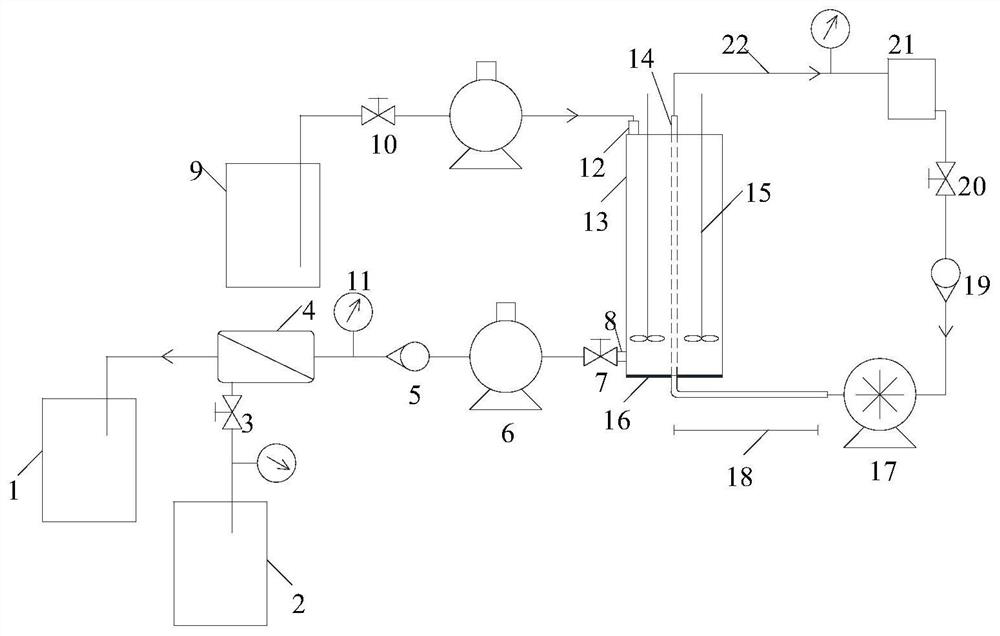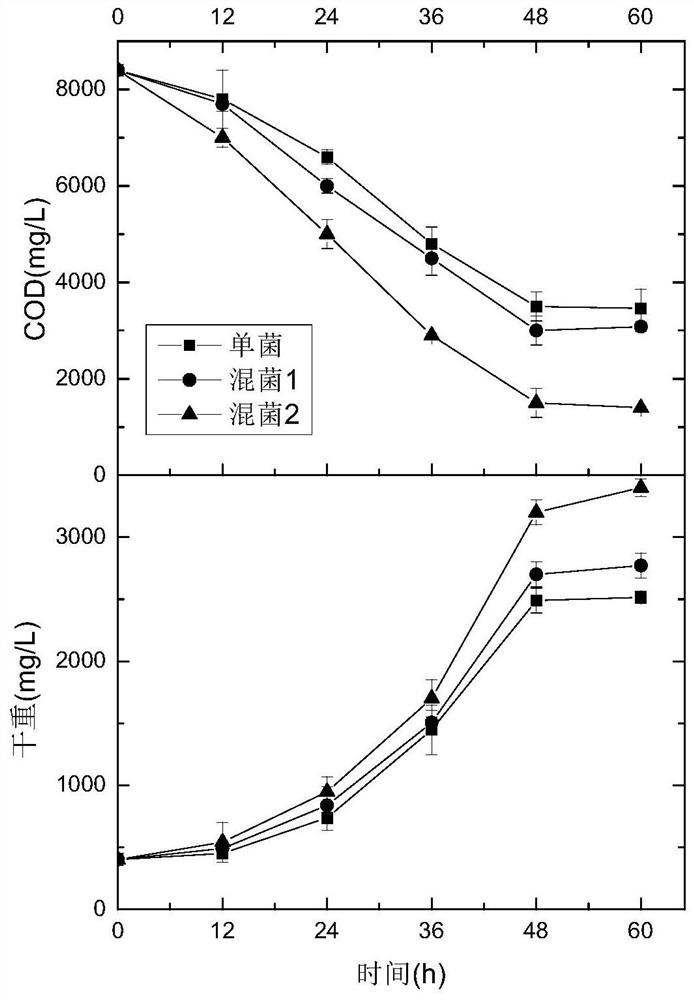Method for utilizing graphene quantum dots to recycle waste water
A graphene quantum dot, resource-based technology, applied in chemical instruments and methods, biological water/sewage treatment, water/sludge/sewage treatment, etc.
- Summary
- Abstract
- Description
- Claims
- Application Information
AI Technical Summary
Problems solved by technology
Method used
Image
Examples
Embodiment 1
[0037] see figure 1 , a device for treating wastewater using graphene quantum dots, comprising a photosynthetic bacteria photobioreactor 13, a quartz tube 14, a silica gel tube 22, and an ultraviolet lamp 18;
[0038] The photosynthetic bacteria photobioreactor 13 is a cuboid container made of plexiglass, and the quartz tube 14 is vertically arranged in the photosynthetic bacteria photobioreactor 13 center, and the lower end of the quartz tube is the inlet of the graphene quantum dot solution, and the upper end is the graphene quantum dot solution. The outlet of the dot solution, the inlet and the outlet are connected with a silica gel tube 22 to form a circulation loop of the graphene quantum dot solution; the circulation loop is provided with a peristaltic pump 17, a circulating liquid flow meter 19, a pressure gauge, a flow control valve 20 and a circulating fluid buffer room 21;
[0039] An ultraviolet lamp 18 is placed at the section where the silicone tube connects to t...
Embodiment 2
[0043] Embodiment 2 photosynthetic bacteria optimization test
[0044] 1) Using the equipment of Example 1, pump 1L of organic waste water into the reactor body from the waste water inlet 12 through the water pump, add 9L of distilled water, NH 4 Cl 14.6g, KH 2 PO 4 3.7g, the final COD was 8407.2mg / L, the TN was 420.3mg / L, and the TP was 84.1mg / L;
[0045] 2) Three groups of photosynthetic bacteria test: add a single strain (Rhodobacterium sphaeroides), mixed bacteria solution 1 (Rhodobacterium capsulata, Rhodobacter colloidus, Crimson red snail, Rhodobacter sphaeroides) to the treated wastewater Bacteria, Rhodopseudomonas palustris mixed in equal volume), mixed bacteria liquid 2 (capsulated rhodobacter, colloidal rhododendron, crimson red snail, rhodobacter sphaeroides, rhodopseudomonas palustris five kinds The volume ratio is 1:2:2:3:4).
[0046] Mix until the dry weight of photosynthetic bacteria is 0.35g / L, the total liquid volume is two-thirds of the volume of the ma...
Embodiment 3
[0050] Example 3 Wastewater carbon-nitrogen ratio optimization test
[0051] Based on the results of Example 2, the volume ratio of five kinds of rhodobacter capsularis, rhododendron colloidus, crimson red snail, rhodobacter sphaeroides and rhodopseudomonas palustris is 1:2:2:3:4 photosynthetic bacteria. Different carbon-nitrogen ratios are set, and other operations are the same as in Example 2.
[0052] see image 3 , the wastewater C / N / P ratio is 20:5:1, 100:5:1 and 500:5:1, the biomass after 60 hours of treatment is 2714.7, 3420.4, 2493.9mg / L, and the COD removal rate is respectively 71.9%, 82.9%, 63.9%. Comprehensive biomass and pollutant removal effect, choose the appropriate C / N / P as 100-200:5:1.
PUM
| Property | Measurement | Unit |
|---|---|---|
| particle diameter | aaaaa | aaaaa |
| diameter | aaaaa | aaaaa |
Abstract
Description
Claims
Application Information
 Login to View More
Login to View More - R&D
- Intellectual Property
- Life Sciences
- Materials
- Tech Scout
- Unparalleled Data Quality
- Higher Quality Content
- 60% Fewer Hallucinations
Browse by: Latest US Patents, China's latest patents, Technical Efficacy Thesaurus, Application Domain, Technology Topic, Popular Technical Reports.
© 2025 PatSnap. All rights reserved.Legal|Privacy policy|Modern Slavery Act Transparency Statement|Sitemap|About US| Contact US: help@patsnap.com



